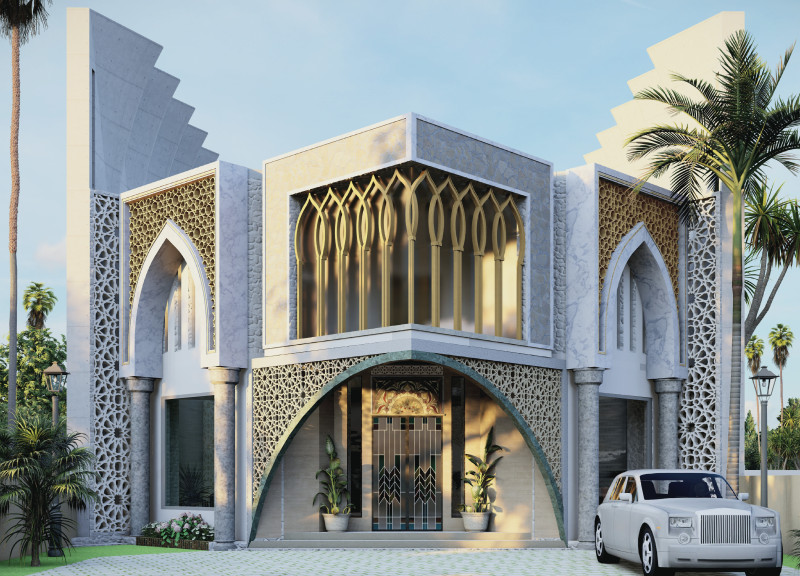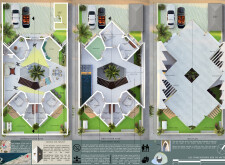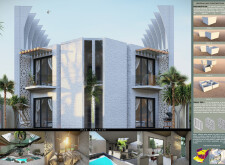5 key facts about this project
## Project Overview
The "Emirate's Fabric of Unity" is located in Dubai, UAE, and is conceptualized as a representation of the traditional weaving culture that underpins the diverse tribes of the United Arab Emirates. The design aims to manifest the interconnectedness of these cultures through both structural and aesthetic choices, creating a living space that encourages community interaction while respecting individual privacy. The project seeks to harmonize modern living with traditional cultural values.
## Spatial Organization and User Experience
The layout of the building strategically delineates private and communal areas. The ground floor plan features spacious living rooms that facilitate family gatherings, an office designed for productivity, and a prayer hall to serve spiritual needs. The first floor prioritizes family living with multiple bedrooms and shared spaces, fostering interactions among residents. Attention to site orientation and wind dynamics enhances comfort, employing features such as wind catchers and pergolas to support natural cooling.
## Material Selection and Sustainability Measures
The material palette is integral to the project's sustainability and aesthetic appeal, emphasizing local craftsmanship and environmental considerations. Gabion walls made from local coral rocks provide structural stability and ecological benefits. Durable concrete surfaces are combined with ornamental details that reflect traditional craftsmanship, while large glass windows maximize natural light and create an inviting interior. The incorporation of greenery, including a central courtyard with palm trees and water features, strengthens the connection to nature and promotes overall well-being. Wind catchers are strategically utilized to enhance energy efficiency by efficiently capturing breezes to lower reliance on mechanical cooling. Elements inspired by local wildlife further weave cultural narratives into the architectural fabric.






















































